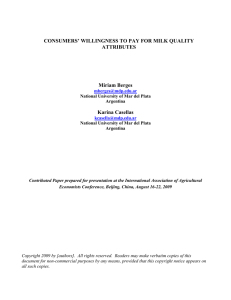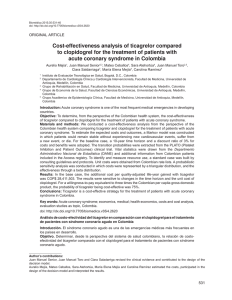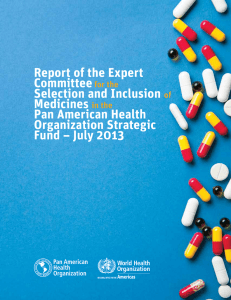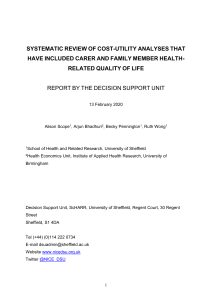Implications of global pricing policies of pharmaceuticals for access
Anuncio
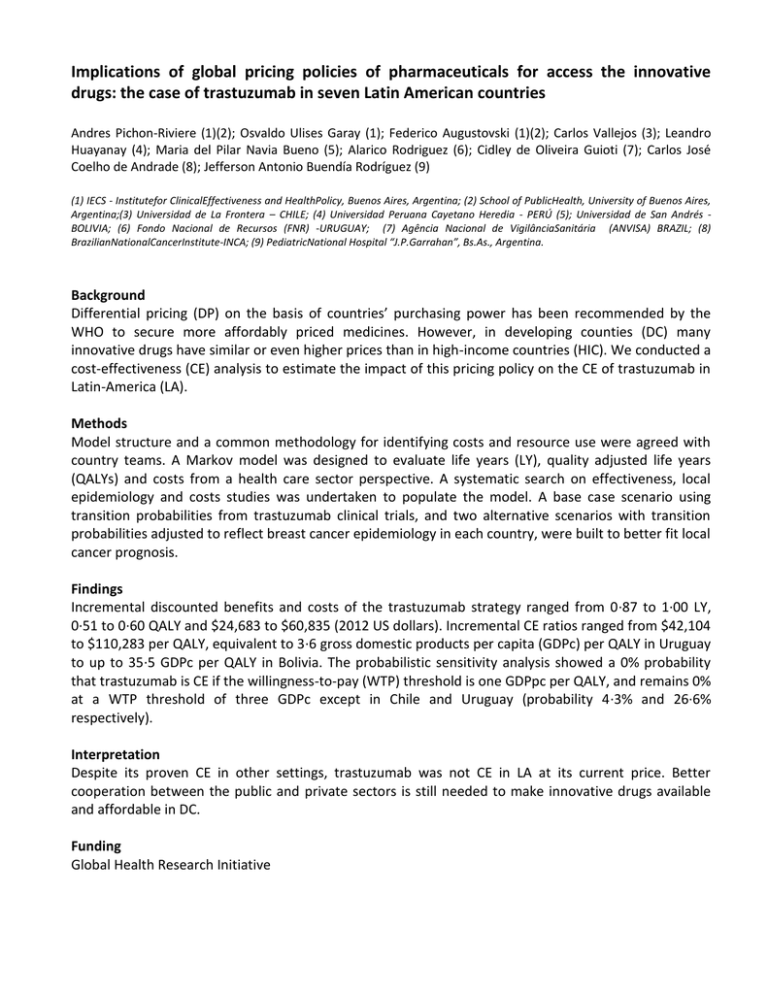
Implications of global pricing policies of pharmaceuticals for access the innovative drugs: the case of trastuzumab in seven Latin American countries Andres Pichon-Riviere (1)(2); Osvaldo Ulises Garay (1); Federico Augustovski (1)(2); Carlos Vallejos (3); Leandro Huayanay (4); Maria del Pilar Navia Bueno (5); Alarico Rodriguez (6); Cidley de Oliveira Guioti (7); Carlos José Coelho de Andrade (8); Jefferson Antonio Buendía Rodríguez (9) (1) IECS - Institutefor ClinicalEffectiveness and HealthPolicy, Buenos Aires, Argentina; (2) School of PublicHealth, University of Buenos Aires, Argentina;(3) Universidad de La Frontera – CHILE; (4) Universidad Peruana Cayetano Heredia - PERÚ (5); Universidad de San Andrés BOLIVIA; (6) Fondo Nacional de Recursos (FNR) -URUGUAY; (7) Agência Nacional de VigilânciaSanitária (ANVISA) BRAZIL; (8) BrazilianNationalCancerInstitute-INCA; (9) PediatricNational Hospital “J.P.Garrahan”, Bs.As., Argentina. Background Differential pricing (DP) on the basis of countries’ purchasing power has been recommended by the WHO to secure more affordably priced medicines. However, in developing counties (DC) many innovative drugs have similar or even higher prices than in high-income countries (HIC). We conducted a cost-effectiveness (CE) analysis to estimate the impact of this pricing policy on the CE of trastuzumab in Latin-America (LA). Methods Model structure and a common methodology for identifying costs and resource use were agreed with country teams. A Markov model was designed to evaluate life years (LY), quality adjusted life years (QALYs) and costs from a health care sector perspective. A systematic search on effectiveness, local epidemiology and costs studies was undertaken to populate the model. A base case scenario using transition probabilities from trastuzumab clinical trials, and two alternative scenarios with transition probabilities adjusted to reflect breast cancer epidemiology in each country, were built to better fit local cancer prognosis. Findings Incremental discounted benefits and costs of the trastuzumab strategy ranged from 0·87 to 1·00 LY, 0·51 to 0·60 QALY and $24,683 to $60,835 (2012 US dollars). Incremental CE ratios ranged from $42,104 to $110,283 per QALY, equivalent to 3·6 gross domestic products per capita (GDPc) per QALY in Uruguay to up to 35·5 GDPc per QALY in Bolivia. The probabilistic sensitivity analysis showed a 0% probability that trastuzumab is CE if the willingness-to-pay (WTP) threshold is one GDPpc per QALY, and remains 0% at a WTP threshold of three GDPc except in Chile and Uruguay (probability 4·3% and 26·6% respectively). Interpretation Despite its proven CE in other settings, trastuzumab was not CE in LA at its current price. Better cooperation between the public and private sectors is still needed to make innovative drugs available and affordable in DC. Funding Global Health Research Initiative
